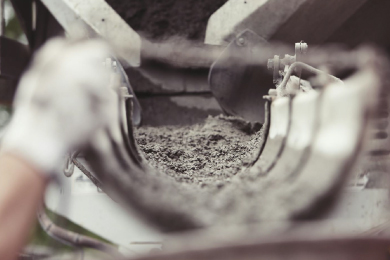With an increasing focus on the climate crisis, ambitious global carbon reduction targets, and the latest MEES regulations stipulating that buildings must have an EPC rating of A to E, it is more important than ever to ensure all buildings are energy efficient and sustainable. Thankfully advances in technology, such as Complex Thermal Modelling, mean that we are now able to simulate the energy efficiency of a building in a virtual environment.

Simon Green, Managing Director at Green Building Design Consultants, who specialise in low energy and low carbon design, explains: “Some buildings are currently losing up to a quarter of their energy – quite a shocking statistic in 2021. More needs to be done to ensure all buildings are energy efficient and sustainable. As a landlord or building owner, it is important to know how much energy your building will use before the occupiers commit to any refurbishments or upgrades. Complex Thermal Modelling is a key and powerful technology, which enables engineers to accurately predict the impact of making changes to buildings on their energy consumption.”
Buildings are dynamic environments made up of numerous elements and changing just one aspect, such as ventilation, can have a knock-on effect on everything else. The complexities of a building must be understood to make informed decisions. Complex Thermal Modelling allows for a virtual environment of a building to be simulated – holistically. Creating a holistic model of a building ensures that every element of the building works together in an integrated way, and provides accurate predictions regarding energy and cost savings, dependant on any changes made.
By assessing information about a building, such as its design, climate and use, Complex Thermal Modelling enables engineers to clearly see how the building will perform and make recommendations for suggested changes. A range of parameters can be investigated, from heat loss and heat gain, to a full energy analysis and compliance checks. This offers a clear view on how to optimise the performance and comfort-levels of individual buildings, resulting in significant reductions in energy consumption.
The technology allows for this to be conducted in minute detail to guarantee accurate results. For example, weather files from the location of the building can accurately show energy usage in different climates and weather conditions. This ensures that HVAC systems are correctly sized for the individual building, by using accurate and up to date data, thereby reducing any energy wastage from installing the wrong sized system.
JaeJae Dimmock, Mechanical Engineer at Green Building Design Consultants, comments: “Too many buildings have HVAC systems which are oversized for the building’s needs, resulting in increased installation costs and inefficient running costs, not to mention considerable increase in energy use and carbon emissions. By understanding exactly what a building requires, the correctly sized system can be installed resulting in increased comfort and significant savings.”
Predicting how a building’s design will perform not only helps reduce energy, but also helps adhere to all necessary compliance measures and building regulations. With the new MEES regulations stipulating that a building can only be rented or sold with an EPC rating of A to E, the compliance checking function in Complex Thermal Modelling allows for suggested improvements to be made to increase a building’s EPC rating.
As we move into a more virtual world as a result of the Covid pandemic, Complex Thermal Modelling provides the optimal solution. Virtual simulation carries the huge benefit of letting a building owner or landlord know what needs to be done, the financial investment required, the impact forecasted, thereby giving reassurance that the improvements will work. This helps reduce energy consumption and create the most sustainable buildings possible.
Simon Green concludes: “With the increased focus and drive towards carbon reduction targets, it isn’t enough for building designs to just have some sustainability and energy efficiency features added on. We must remove any guesswork and use accurate data and predictions to build energy efficiency into the fabric of a building to yield dramatic cost savings, energy savings and higher levels of compliance. Ideally, every person needs to halve their carbon footprint in the next nine years to prevent our planet from overheating. The buildings we use are a major part of our personal carbon footprint, and the sooner we all start the better the world will be for our children and their children.”




.png)




